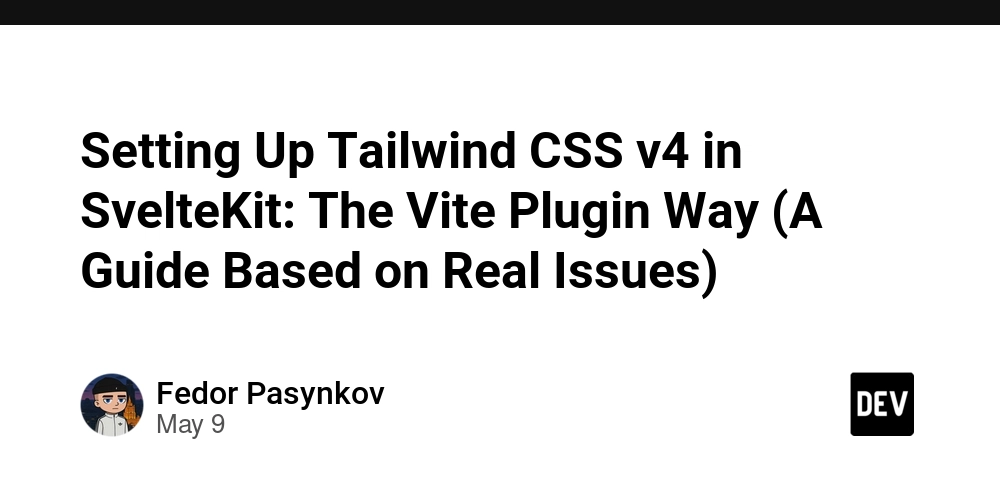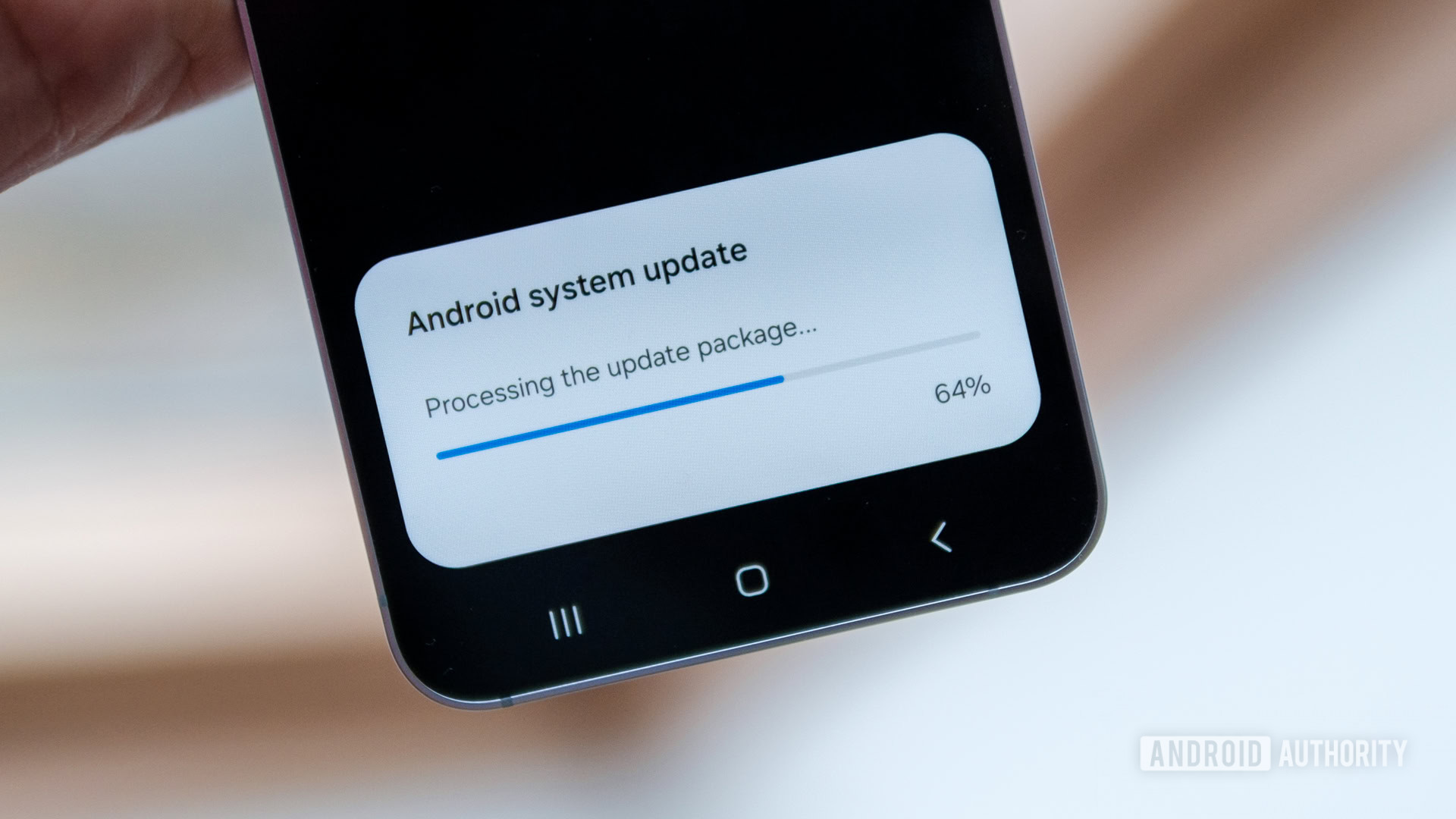Setting Up Tailwind CSS v4 in SvelteKit: The Vite Plugin Way (A Guide Based on Real Issues)
Setting Up Tailwind CSS v4 in SvelteKit: The Vite Plugin Way Integrating new versions of libraries can sometimes lead to unexpected issues. Based on recent experiences and common problems encountered when setting up Tailwind CSS v4 with SvelteKit, this guide focuses specifically on the recommended approach using the official Vite plugin. We'll cover the steps assuming you're initializing your SvelteKit project with the npx sv create . CLI tool, which offers a convenient way to include Tailwind from the start. Important Compatibility Note: Tailwind CSS v4 is designed for modern browsers: Safari 16.4+, Chrome 111+, Firefox 128+. If you need to support older browsers, please stick with v3.4 as v4 relies on modern CSS features like @property and color-mix(). 1. Creating Your SvelteKit Project with Tailwind CSS Integration (via npx sv create .) The npx sv create . CLI provides a streamlined way to scaffold a SvelteKit project and include Tailwind CSS during the initial setup. Create your project directory: Open your terminal, create the directory for your frontend application, and navigate into it: mkdir frontend cd frontend Initialize the SvelteKit project using sv: Run the following command in the directory: npx sv create . Follow the interactive prompts: Select your SvelteKit template. Answer questions about TypeScript, ESLint, Prettier, and your adapter. Crucially, when asked "What would you like to add to your project?", use your arrow keys and spacebar to select the tailwind option. Choose your package manager (npm, yarn, or pnpm). The CLI will install dependencies, including Tailwind CSS, and likely create some initial configuration files. 2. Verifying Installed Packages (for Vite Plugin Integration) After npx sv create . completes, let's ensure you have the correct packages installed for integrating Tailwind via the Vite plugin. Open package.json: Navigate to the root of your frontend directory (./frontend/) and open the package.json file. Check devDependencies: Confirm that the following packages are present (in v4-compatible versions, often @latest or @next for pre-releases): tailwindcss (v4.x) @tailwindcss/vite (This is the specific Vite plugin we need) postcss (May be installed as a dependency of Vite or SvelteKit; might be needed for other PostCSS plugins, but not for Tailwind integration via the Vite plugin itself) autoprefixer (Not required for vendor prefixes in v4 when using the Vite plugin, but might be present if added by the CLI or for other purposes) @sveltejs/kit and @sveltejs/vite-plugin-svelte (installed by the CLI) Install or Uninstall as Needed: # If @tailwindcss/vite is missing: npm install -D @tailwindcss/vite # If @tailwindcss/postcss was installed instead of @tailwindcss/vite: # npm uninstall -D @tailwindcss/postcss # Uninstall if you don't need the PostCSS plugin npm install -D @tailwindcss/vite # autoprefixer and postcss-import are NOT needed for Tailwind v4 integration via the Vite plugin. # You can uninstall them if they aren't required for other purposes: # npm uninstall -D autoprefixer postcss-import 3. Configuring the Vite Plugin (vite.config.ts) Since you're integrating Tailwind via the Vite plugin and skipping the PostCSS config file approach, you'll configure Tailwind directly in your Vite configuration. Open vite.config.ts (or .js): This file is located in the root of your frontend directory. Configure Vite Plugins: Ensure the tailwindcss() plugin, imported from @tailwindcss/vite, is added to the root plugins array of your Vite configuration: import { defineConfig } from 'vite'; import { sveltekit } from '@sveltejs/kit/vite'; import tailwindcss from '@tailwindcss/vite'; // Import the Vite plugin export default defineConfig({ plugins: [ sveltekit(), tailwindcss(), // Add the Tailwind CSS Vite plugin here! ], css: { // Make sure there is no 'postcss' section configured for Tailwind integration here. // If a 'postcss' section exists (e.g., added by the CLI or for other plugins like Autoprefixer), // ensure it does NOT include the Tailwind CSS plugin. // postcss: { plugins: [] }, // A community recommendation (might help with Vite plugin issues): // transformer: 'lightningcss' }, }); Optional: Configure CSS Transformer: Some users report that setting css.transformer: 'lightningcss' in vite.config.ts can help resolve certain issues when using the @tailwindcss/vite plugin. Add this line to the css section if you encounter unexpected behavior: css: { transformer: 'lightningcss' }, 4. Importing Tailwind CSS in Your Main CSS File Locate the main CSS file that is imported somewhere in your SvelteKit application (e.g., src/app.css). Use ONLY @import "tailwindcss";: According to the official v4 guide, the correct and only recommended way to include Tailwind's base styles, components, and utilities is with a single @impo

Setting Up Tailwind CSS v4 in SvelteKit: The Vite Plugin Way
Integrating new versions of libraries can sometimes lead to unexpected issues. Based on recent experiences and common problems encountered when setting up Tailwind CSS v4 with SvelteKit, this guide focuses specifically on the recommended approach using the official Vite plugin.
We'll cover the steps assuming you're initializing your SvelteKit project with the npx sv create . CLI tool, which offers a convenient way to include Tailwind from the start.
Important Compatibility Note: Tailwind CSS v4 is designed for modern browsers: Safari 16.4+, Chrome 111+, Firefox 128+. If you need to support older browsers, please stick with v3.4 as v4 relies on modern CSS features like @property and color-mix().
1. Creating Your SvelteKit Project with Tailwind CSS Integration (via npx sv create .)
The npx sv create . CLI provides a streamlined way to scaffold a SvelteKit project and include Tailwind CSS during the initial setup.
-
Create your project directory: Open your terminal, create the directory for your frontend application, and navigate into it:
mkdir frontend cd frontend -
Initialize the SvelteKit project using
sv: Run the following command in the directory:
npx sv create . -
Follow the interactive prompts:
- Select your SvelteKit template.
- Answer questions about TypeScript, ESLint, Prettier, and your adapter.
- Crucially, when asked "What would you like to add to your project?", use your arrow keys and spacebar to select the
tailwindoption. - Choose your package manager (
npm,yarn, orpnpm). - The CLI will install dependencies, including Tailwind CSS, and likely create some initial configuration files.
2. Verifying Installed Packages (for Vite Plugin Integration)
After npx sv create . completes, let's ensure you have the correct packages installed for integrating Tailwind via the Vite plugin.
- Open
package.json: Navigate to the root of your frontend directory (./frontend/) and open thepackage.jsonfile. -
Check
devDependencies: Confirm that the following packages are present (in v4-compatible versions, often@latestor@nextfor pre-releases):-
tailwindcss(v4.x) -
@tailwindcss/vite(This is the specific Vite plugin we need) -
postcss(May be installed as a dependency of Vite or SvelteKit; might be needed for other PostCSS plugins, but not for Tailwind integration via the Vite plugin itself) -
autoprefixer(Not required for vendor prefixes in v4 when using the Vite plugin, but might be present if added by the CLI or for other purposes) -
@sveltejs/kitand@sveltejs/vite-plugin-svelte(installed by the CLI)
-
-
Install or Uninstall as Needed:
# If @tailwindcss/vite is missing: npm install -D @tailwindcss/vite # If @tailwindcss/postcss was installed instead of @tailwindcss/vite: # npm uninstall -D @tailwindcss/postcss # Uninstall if you don't need the PostCSS plugin npm install -D @tailwindcss/vite # autoprefixer and postcss-import are NOT needed for Tailwind v4 integration via the Vite plugin. # You can uninstall them if they aren't required for other purposes: # npm uninstall -D autoprefixer postcss-import
3. Configuring the Vite Plugin (vite.config.ts)
Since you're integrating Tailwind via the Vite plugin and skipping the PostCSS config file approach, you'll configure Tailwind directly in your Vite configuration.
- Open
vite.config.ts(or.js): This file is located in the root of your frontend directory. -
Configure Vite Plugins: Ensure the
tailwindcss()plugin, imported from@tailwindcss/vite, is added to the rootpluginsarray of your Vite configuration:
import { defineConfig } from 'vite'; import { sveltekit } from '@sveltejs/kit/vite'; import tailwindcss from '@tailwindcss/vite'; // Import the Vite plugin export default defineConfig({ plugins: [ sveltekit(), tailwindcss(), // Add the Tailwind CSS Vite plugin here! ], css: { // Make sure there is no 'postcss' section configured for Tailwind integration here. // If a 'postcss' section exists (e.g., added by the CLI or for other plugins like Autoprefixer), // ensure it does NOT include the Tailwind CSS plugin. // postcss: { plugins: [] }, // A community recommendation (might help with Vite plugin issues): // transformer: 'lightningcss' }, }); -
Optional: Configure CSS Transformer: Some users report that setting
css.transformer: 'lightningcss'invite.config.tscan help resolve certain issues when using the@tailwindcss/viteplugin. Add this line to thecsssection if you encounter unexpected behavior:
css: { transformer: 'lightningcss' },
4. Importing Tailwind CSS in Your Main CSS File
Locate the main CSS file that is imported somewhere in your SvelteKit application (e.g., src/app.css).
-
Use ONLY
@import "tailwindcss";: According to the official v4 guide, the correct and only recommended way to include Tailwind's base styles, components, and utilities is with a single@importdirective. The@tailwind base;,@tailwind components;, and@tailwind utilities;directives have been removed in v4.
@import "tailwindcss";Remove any other old
@importor@tailwinddirectives from this file.
5. Tailwind CSS v4 Theme Configuration
In Tailwind CSS v4, the primary and recommended approach for theme configuration shifts to using CSS directly.
-
Configuration via
@themein CSS (Recommended v4 Approach)-
Use
@themein your main CSS file: Define your custom theme properties directly in your main CSS file using the@themedirective. These properties will become CSS variables and Tailwind theme tokens. With this approach, thetailwind.config.jsfile is not needed for theme customization, only potentially for content paths.
@import "tailwindcss"; @theme { /* Define your custom theme properties as CSS variables */ --color-brand-primary: #3490dc; --font-family-heading: "Georgia", serif; --spacing-128: 32rem; /* ... other theme variables */ } /* Rest of your styles */ -
Automatic Content Detection and
@source: Tailwind v4 automatically scans most project files. If you need to include files from non-standard locations (e.g., component libraries innode_modules), use the@sourcedirective in the same CSS file:
@import "tailwindcss"; @source "../node_modules/@my-company/ui-lib"; @theme { /* ... */ } -
Using
tailwind.config.jsfor Content (Optional): Thetailwind.config.jsfile can still be used solely for defining thecontentsection if you prefer explicitly listing paths or if auto-detection is insufficient:
/** @type {import('tailwindcss').Config} */ export default { content: [ './src/**/*.{html,js,svelte,ts}', // Explicitly list paths here ], theme: { extend: { // This section can be empty or removed if using @theme in CSS }, }, plugins: [], // corePlugins, safelist, separator options are NOT supported in v4 JS config };If you use
tailwind.config.jsfor content, you generally don't need the@configdirective in your CSS when using the Vite plugin and@themefor theme definition.
-
Important Note about
@applyin v4 (Alpha/RC): Based on community feedback, the@applyfunctionality in pre-release (alpha/RC) versions of Tailwind CSS v4 might have known issues or behave incorrectly. If you encounter unexpected behavior when using@apply, consider following the relevant GitHub Issues or using alternative approaches (like direct CSS variables) until v4 is stable.
6. Using Tailwind CSS in Svelte Components (
Hello world!
Use CSS Variables Directly (Preferred): Often, instead of @apply, you can directly use the corresponding Tailwind CSS variables in your
Hello world!
7. General v4 Changes and Recommendations
-
Removed/Renamed Utilities: Many deprecated utilities are removed, some are renamed (e.g.,
outline-nonetooutline-hidden), scales are changed (shadow,blur,rounded), and default values are updated (ringfrom 3px to 1px, border/ring colors tocurrentColor). Refer to the official v4 upgrade guide for a complete list. -
space-x/space-ySelector Change: The selector used by these utilities has changed, which might require adjustments in some complex layouts. Consider usingflexorgridwithgapas an alternative. -
Custom Utilities (
@utility): Use the@utilitydirective instead of@layer utilitiesand@layer components.
@utility my-custom-utility { /* Your styles */ } Variables in Arbitrary Values: The syntax for using CSS variables in arbitrary values changed from square brackets to parentheses:
bg-[--var]->bg-(--var).Prefixes: If you use a prefix, the syntax is now
prefix:class(e.g.,tw:flex). Configure it within the@importrule:@import "tailwindcss" prefix(tw);.Using
theme(): Using CSS variables directly (var(--color-...)) is recommended. If you usetheme(), the syntax is nowtheme(--variable-name)(e.g.,theme(--breakpoint-xl)).Theme in JavaScript: The
resolveConfigfunction is removed. UsegetComputedStyleto access theme CSS variables in JS.
By following this guide, focusing on the Vite plugin integration, you should be able to set up Tailwind CSS v4 correctly in your SvelteKit project and adhere to the latest v4 practices, avoiding issues related to PostCSS configuration and outdated methods.










































































































































































![[The AI Show Episode 146]: Rise of “AI-First” Companies, AI Job Disruption, GPT-4o Update Gets Rolled Back, How Big Consulting Firms Use AI, and Meta AI App](https://www.marketingaiinstitute.com/hubfs/ep%20146%20cover.png)










































































































































































.png?width=1920&height=1920&fit=bounds&quality=70&format=jpg&auto=webp#)































































































_Aleksey_Funtap_Alamy.jpg?width=1280&auto=webp&quality=80&disable=upscale#)
_Sergey_Tarasov_Alamy.jpg?width=1280&auto=webp&quality=80&disable=upscale#)















































































































![Apple Foldable iPhone to Feature New Display Tech, 19% Thinner Panel [Rumor]](https://www.iclarified.com/images/news/97271/97271/97271-640.jpg)
![Apple Developing New Chips for Smart Glasses, Macs, AI Servers [Report]](https://www.iclarified.com/images/news/97269/97269/97269-640.jpg)
![Apple Shares New Mother's Day Ad: 'A Gift for Mom' [Video]](https://www.iclarified.com/images/news/97267/97267/97267-640.jpg)
![Apple Shares Official Trailer for 'Stick' Starring Owen Wilson [Video]](https://www.iclarified.com/images/news/97264/97264/97264-640.jpg)



































































































